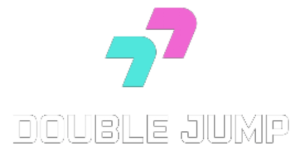Setting up Your Campaign
Launching a successful Kickstarter campaign requires a lot of work and preparation. But the key to standing out from the other campaigns is to create an eye-catching video. A well-made video will tell the story of the project, explain its features, and show why backers should pledge.
This article will discuss how to set up your campaign and use video to differentiate yourself from the competition on Kickstarter.
- Set up your campaign
- Create an eye-catching video
- Tell the story of the project
- Explain its features
- Show why backers should pledge
- Differentiate yourself from the competition
Research your competition
Doing some research before getting started can put you one step ahead of the competition. There are a few pieces of information to consider about your competitors before launching your campaign:
- What is their message?
- Are they using more visual elements in their video or more traditional narration?
- What rewards do they offer donors and backers?
- What reward tiers do they offer, and how quickly did their campaign goals get met compared to the average duration of 30 days?
By understanding what has worked, and perhaps what has not worked, you can decide on the message to send in your videos, as well as what kind of rewards should be offered to donors. With this information in hand, you have a better chance of creating a successful campaign. Knowing what sets you apart from your competition is crucial in developing effective messaging that will help potential donors identify with your cause and assist them in choosing between campaigns.
Create a compelling story
Creating a compelling story for your campaign is essential for captivating potential backers. Your story should echo your company’s values, mission and goals, and focus on the user experience. It should also explain why you need the funds and what the money raised will be used for.
The most successful campaigns are focused around a central narrative—whether it’s a product, service or cause. A strong narrative gives backers an emotional connection to your campaign that they can identify with and feel passionate to support. Stories should be honest, raw and authentic; revealing who you are, how you got started, what inspired your project, or anything else that might help people understand why they should trust in your business.
Include visual elements such as hero images featuring people or mock-ups that demonstrate how the product will look like when it’s ready for use—these visuals create familiarity and trust with Kickstarter users. You can also create a timeline of significant milestones achieved leading up to this moment in which you’re launching a campaign — a visual milestone map helps backers understand what has happened prior to their arrival and makes them feel more connected to your mission as well as more involved in the fundraising process itself.
Lastly but not least important is creating tangible rewards tiers which give them something back in exchange for their support – these reward systems must make sense from both a backer point of view (the price/value ratio has to be equitable) yet at the same time serve as incentives for higher contributions from those interested in larger packages.
- Hero images featuring people or mock-ups that demonstrate how the product will look like when it’s ready for use.
- Timeline of significant milestones achieved leading up to this moment in which you’re launching a campaign.
- Creating tangible rewards tiers which give them something back in exchange for their support.
Set realistic goals
When setting up your campaign on Kickstarter, it’s important to set realistic goals when it comes to the amount of money you want to raise. A common mistake made by first-time creators is setting a goal too high, which can cause the project to fail in its early stages.
Setting realistic goals also means being honest and open with your backers. Don’t inflate progress or mislead backers by claiming inflated progress. Kickstarter campaigns are not just about raising funds; they’re also about forming relationships. It’s essential to build trust with potential backers by maintaining open and transparent communication throughout the entire process.
When crafting your campaign, consider using video as an effective way to engage viewers and convey your message in a way that connects with them emotionally. Using video not only makes you stand out from the competition; it also provides potential backers with a complete snapshot of what your product or service will look like once completed.
Create videos showcasing the features of the product and any relevant background information necessary for people to understand how it works and how they would use it in their daily lives.
Explain why someone should back your project over any other.
Preparing Your Video
Video can be a powerful tool for crowdfunding campaigns on Kickstarter. It can tell your story in an engaging and captivating way, helping you to stand out from the competition and ultimately attract more backers. Preparing an effective video is key and can be a time-consuming effort.
Below, we’ll look at some of the elements and tips you should consider when creating a successful video for your Kickstarter campaign.
Creating a successful video for a Kickstarter campaign involves:
- Defining your story
- Creating a script
- Planning your shots
- Capturing the footage
- Editing the video
Each of these elements requires careful consideration and attention to detail. Here are some tips to help you create an effective video:
- Keep your story focused and succinct
- Make sure the video is visually appealing
- Include relevant visuals and music
- Make sure the audio is of high quality
- Keep the video short (90 seconds)
- Make sure your video is high quality
For crowdfunding campaigns, the quality of your video is key. There are a few things you can do to make sure your video looks great on a variety of platforms:
- Make sure that any video you use is in HD (high-definition); 1080p is the preferred resolution for campaigns.
- Audio quality is just as important as video, so invest in good microphones and record your sound separately from the video itself.
- When editing, always remember that length matters more than perfection: keep your videos relatively short and punchy for maximum impact.
- Don’t forget to add text or framing elements to give context to your videos; this adds professional polish and helps reinforce the key messages of your campaign in viewers’ minds.
- Stick with traditional music licensing services if you plan on using commercial music tracks in your videos — getting permission from individual songwriters can be complicated, time consuming, and expensive!
Include a call to action
A successful Kickstarter video should clearly explain the project and motivate people to support it. Including a call to action is an effective way to increase pledges, as it invites viewers to become part of the story.
There are several ways to incorporate a call to action into your video while staying true to your project’s theme.
- Explain why the project exists and add a personal touch by including stories of real people or organizations who stand behind the concept.
- Ask viewers what they can do in response—point out tasks that need help and direct them towards solutions.
- Introduce yourself as a representative of the cause and offer multiple avenues for engagement or donation on-screen.
By following this simple advice you will be able create an effective video that will capture viewer’s attention long enough for them to take meaningful action such as pledging funds or promoting your work on social media channels.
Adding such features rewards traditional crowdfunding backers with more than just financial incentives, but also an inviting sense of responsibility and inner satisfaction from taking part in something special that—with their own help—can reach greater heights together.
Keep it short and sweet
It goes without saying that potential backers are won and lost in a matter of seconds. Therefore, it’s important to make sure your video is concise and easy to digest. Try to keep it under two minutes, ideally 90 seconds, long and focus on the points you want to make about your project clearly and with enthusiasm that will urge the viewer to take action.
Be sure to include visuals of the product you’re raising funds for and explain the problem your project is looking to solve as well as how backers can help make it happen:
- Visuals of the product
- Explain the problem
- Explain how backers can help
Once complete, run through your video several times checking for mistakes in spelling or grammar, making sure all links work correctly, that any sound levels are even and there are no technical issues such as slow-loading images or stuttering audio.
Promoting Your Video
Creating a compelling video for your Kickstarter campaign is an effective way to jump start your crowdfunding efforts. It can help to differentiate your project from the competition, presenting the story of your campaign in an engaging way. Once the video is produced, you need to get it out to the masses.
Below, we will discuss the techniques for promoting your crowdfunding video and reaching the right audience.
- Embed the video on your Kickstarter page
- Post the video on social media platforms
- Create an email campaign
- Leverage influencers
- Optimize your video with keywords
Share your video on social media
Social media like Facebook, Twitter, Instagram, Google+ and YouTube can be a useful tool to spread awareness of your video. Utilizing these platforms will help ensure your video has the reach it needs to succeed in capturing the interest of potential backers.
When posting a video on social media, start by creating interesting and engaging content. Post images and short clips from your video to give followers a preview. You can also use captions to introduce viewers to the project and entice them into watching the full version. Try using relevant hashtags so that people searching for content related to your topic will find your film more easily.
Finally, promoting on social media isn’t something you should only do once — keep promoting regularly as you move closer to reaching your funding goal! Share updates about the campaign’s progress and remind viewers about how they can support you. Ask friends, colleagues and potential influencers in related fields to help promote you by sharing content from your campaign across their own networks:
- Share updates about the campaign’s progress
- Remind viewers about how they can support you
Ask friends, colleagues and potential influencers to share content from your campaign
Reach out to influencers
Reaching out to influencers can help you draw attention to your video and bring a more engaged audience to your Kickstarter campaign. The idea is that an influencer is someone with a large platform who can spread the word about your project, either through their network or by simply mentioning it in their own content.
You’ll want to focus on finding people whose audiences overlap with yours. The idea here isn’t just to get free press, but also to use the influencer’s audience as a way to directly reach out and connect with potential backers of your project. To do this successfully, you must remember that most influencers will only be interested in promoting something valuable or interesting for their followers; if your video does not fulfill that goal, they will likely not be interested.
You can start by searching keywords related either to yourself or the type of product you are selling on social media platforms such as Instagram, YouTube, Twitter and Facebook; find individuals who have influence among the same demographic you are targeting and contact them directly.
Once you have identified potential influencers to work with, create a message that offers value for both parties: offer them something of value (e.g., credit in-video or promotion) in exchange for their help spreading the news about your video and/or information about your Kickstarter campaign.
Leverage paid advertising
Creating and distributing a quality video is the first step to promoting a Kickstarter project. The next step is to leverage paid advertising tactics such as online display, email marketing, and social media ads to share the video with a larger audience and stand out from the competition on Kickstarter.
Using online display advertisements, such as banners and text ads, gives you the target audience and reach of traditional media with more measurable results. Partnering with key sites that have frequent visitors that have an interest in your project will help you build brand recognition as well as drive views of your video to users who are likely to become backers or spread awareness.
Email marketing campaigns also allow you to target backers or potential investors who may not have seen your project page yet or are unaware of their ability to be involved in supporting it. You can direct them straight to your Kickstarter page with the click of one button after they’ve watched your video- letting them know why they should pledge money towards it.
Social media is another important platform for promoting video – whether you’re looking for brand evangelists who will amplify your message via their own accounts or targeting individuals most likely interested in viewing/backing your project on these channels.
- Consider exploring:
- Sponsored content
- Influencer campaigns
within Twitter, Instagram, YouTube, and Facebook that push viewers directly towards the video link on Kickstarter where they can take action. Make sure all materials align in terms of messaging touchpoints- so that wherever consumers come from- there’s no confusion when leading them back to our campaign page!
Measuring Your Results
Once you have utilized video for your Kickstarter campaign, it’s important to measure how successful it’s been. This involves reviewing viewership metrics, such as the number of views, rankings, and shares of your video.
- Views
- Rankings
- Shares
Moreover, make sure to look at the conversion rate of people who watch your video that also become backers. These metrics can help you determine whether your video was effective in standing out from the competition, and if you need to do anything differently in the future.
Track your video views
It’s important to measure the success of your marketing efforts, and this includes tracking the views and impressions of your video. Tracking your video views allows you to analyze viewer engagement, and make adjustments if necessary.
Here are some tips on how to track and measure your video’s performance:
- Use analytics – Platforms like YouTube offer robust analytics that allow you to track engagement, such as the number of people who have watched your video, average view duration, and more.
- Use a tracking link – Share an individual link with viewers that they can use to watch the video on YouTube. This way you are able to see how many people clicked on the link.
- Track shares – You can also track how many people are sharing your video or posting it on social media channels by using a URL shortener with built-in analytics.
- Monitor comments – Keep an eye out for any comments from viewers about the content of your video or questions that they have about additional features or products.
Analyze your conversion rate
One of the most important metrics to measure when running a crowdfunding campaign is your conversion rate. This is the percentage of people viewing your project who eventually pledge in support. Many factors can influence your conversion rate, but one of the most significant is using video to communicate with backers.
Studies have shown that campaigns which include a video convert at as much as 3 times higher than those without a video. Therefore, it is essential that you create an engaging and informative video for your Kickstarter project in order to maximize your chances of reaching your goal.
Once you’ve calculated your conversions rate, use it as a measure for improvement over time. Continually tweak and improve elements on your project page such as visuals, messaging or even repositioning certain elements on the page until you achieve better results over time.
Also keep a watchful eye on what other successful projects are doing and implement their strategies into yours – many creators can be incredibly generous in sharing their best practices if you reach out directly via email or social media channels!
Monitor your engagement metrics
Once you’ve launched your video campaign, don’t forget to track your progress. Monitor your page performance over time to see how users respond to the video and which conversations it sparks. This will help you refine, optimize and play to audiences that are already showing an interest in the project.
Contact Us
Fill out the form below and we will be in touch shortly! Looking for employment or contract opportunities? Use this FORM instead.
follow us on instagram @DOUBLEJUMPMEDIA



